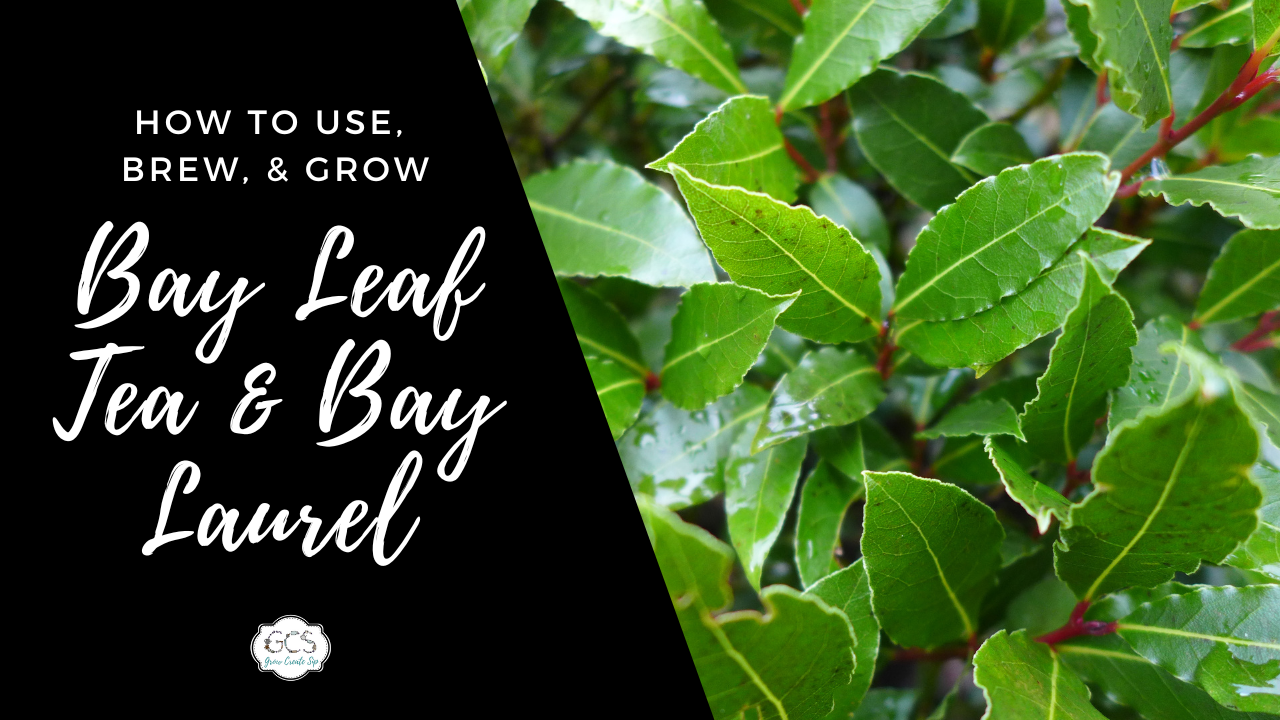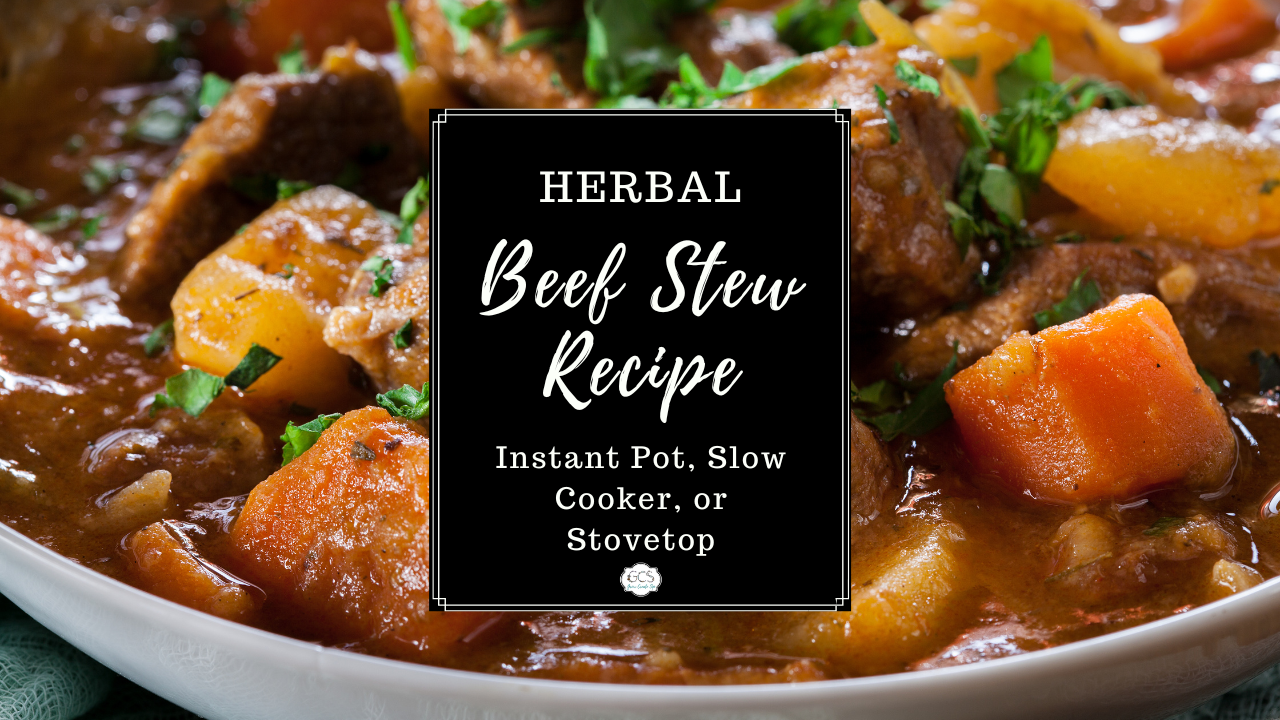Growing Herbs in Pots (And Perennials)
Jul 02, 2021
There are plenty of reasons a full-on garden isn't an option for many people, but growing herbs in pots provide options for growing something wherever you are.
Before we start:
This herbal information is just that, information. This blog post and I DO NOT INTEND to treat, cure, or diagnose any disease or illness. This is for informational, educational and entertainment purposes only. Please consult a physician before using herbs medicinally.
This post also contains affiliate links throughout. Translation: We get a little kickback for sharing certain products, at no additional cost to you, should you choose to purchase said items. And - thank you for supporting our farm and family! Read the full disclaimer here.
We have tons of clay on our almost 2 acres, but we also live on the side of a hill. Once we fight through the clay, we usually strike something big and hard. Like, say a 200 lb boulder the 'size of Texas'... OK, maybe not quite that big. If you ever wonder why we 'decorate' with boulders here on the farm, now you know.
When my dad built our house and created a huge rock wall out of the boulders that he dug out of the foundation, we knew what we were up against to some degree.
We also knew that we wanted to grow LOTS of food! We started out with some pallet square-foot garden boxes.
Having just come from a small city lot that we were renting, we were used to those square-foot vegetable gardens. It wasn't too bad for just moving to the country. We had some tomatoes, peppers, and a few herbs. But it was far from enough for us.
I bought some big pots for the front porch to fill with fresh herbs, we planted grapes up the front porch posts, and a year later we built our hoop house greenhouse with raised bed gardens.
The moral of our story is that you start with what you have and go from there. Whether you have less than desirable planting soil, limited or no access to a garden plot, or physical limitations that prevent you from stooping down in a garden, planting herbs in pots allows you to just plant, and plant where you are with what you have.
Planning Your Potted Herb Garden
Your space is the first thing to consider when you are deciding what you will plant. So, what kind of space do you have?
Is it the tiny window sill in your apartment? Maybe a shelf by a window or the balcony or front porch? Do you have a back patio or a small city lot?
Take note of the area around you to determine ideal places indoors and outdoors for your pots, keeping in mind how much sunlight these spaces have.
If your ideal spaces tend to be in shady spots, do not let that hold you back. Plenty of herbs can be grown in shady areas. I have suggested sixteen of them in Best Medicinal Herbs to Grow in the Shade Garden.

What Types of Herbs Grow Best in Pots?
Before we decide what pot or container to use, we need to know what herb plants we are going to put in them. It Is important to consider what herbs you will use the most, culinary or medicinal? Also, keep in mind how much you plan to consume, be careful here...planting herbs can be addicting!
So what herbs are easy to grow in pots? What herbs do OK indoors? And which herbs should be planted outdoors?
Some of the best plants to use indoors are usually culinary herbs such as basil, chives, rosemary, thyme, oregano, mint, chamomile, lavender, cilantro, and sage. This list could be extended if you think of similar plants in the same family. For example with the mint, you could add pineapple mint, chocolate mint, lemon balm, etc. Or to go with basil, you could add Thai basil and purple basil. The trick here is to keep the plants well-trimmed or used often so that they continue to grow and don't get too big for their pot.
If you are growing in pots outdoors, there are many other plants you could add, including many food-producing plants like strawberries, tomatoes, peppers, garlic, onions, lettuce, or beans. The list goes on and on... you can pretty much plant anything in the right pot, with proper drainage and the right soil.
The main difference between what you plant inside vs. outside is how much sunlight you will have. The outdoor elements and space will usually be larger, allowing you to have bigger pots and containers.

What Are the Best Type of Containers to Plant In?
While all sorts of plants can grow in containers in various sizes, the type of container you use is going to depend on many variables. Again the space you have might determine what kind and size of the container you use.
The plants you want to put in containers may also be a factor in choosing the proper container. As some plants grow and get larger, they may need to be re-potted into a larger container.
Most anything can be a container. It's important to remember that whatever you use for a container should be safe to use as well as have proper drainage for your plants.

Some container ideas might be:
- Terracotta pots
- Plastic 5-gallon buckets
- An old antique claw-foot bathtub (hey a girl can dream)
- Cedar boxes
- Teacups (y'all knew that was coming, right?!)
- Teapots (hey now)
- Ceramic pots
- Plastic pots
- Metal pots and containers
- Old water troughs
- Tires
You can see that the list would go on and so there are lots of choices for containers! Just remember 3 things:
- Is it safe to use for what you are planting (no chemical coating)?
- Does it fit in your space & meet your plant's needs?
- Does it have proper drainage?
My friend and fellow homesteader Melissa K. Norris has a super detailed post on container gardening that I would highly recommend.

What Type of Soil is Best?
Potted plants need a whole different soil then if they are outside in the elements. They are in a contained situation, and so it is up to us to make sure they get the nutrients that they need rather than nature supplying them.
Depending on what you plant, it may want a fertile loamy soil, or it might prefer dry soil. A lavender plant is going to have totally different needs from say a basil plant. So first and foremost, understand the soil conditions that the herb you are potting up needs.
There are some things to keep in mind when you are picking soil to use in your containers. The soil needs to be free from weeds. We are putting this plant in a controlled environment, so we need to make sure no weeds will take it over, but this will save us time too. No weeding! YAY! There also needs to be a component of the soil that will allow airflow. For those of you who have clay soil, you understand that “ain't nothing going in there” because the soil is so hard. It's like planting in a rock. There is no room for little seeds or roots to spread out because it's like cement. The same applies to potting soil; it needs to be light and airy. At the same time, you don't want it so light and airy that the plant can't grow in it without just falling over because there is no support from the soil.
I've done both when mixing potting soil. Too heavy on the compost, and the seeds can't grow and then too light on the peat moss, and so nothing will stand up. That's why I would highly recommend learning how to make your own potting mix in our Herbal Studio & Communi-tea.

Don’t Forget the Draining Material!
When you are planting herbs in containers, you want to make sure that they have good drainage. The reason that draining soil is essential is that the plant's roots are not just sitting in water the whole time. Plants that love a dryer climate will need more drainage, whereas plants that like a wet moist environment will need less. Most of the drainage is going to come from the soil content.
Now, if these are outside containers like raised beds, the drainage will come naturally through not just the soil but also the bottom of the raised bed.
When you are planting in pots there are 3 essential things to consider when it comes to drainage:
- The soil content
- Having drainage holes in your container.
- OR having drainage material at the bottom of the container
It isn't always necessary to have drainage holes AND drainage material. Still, again it's really going to depend on how much drainage your particular plant needs.
Some ideas for drainage material to place in the bottom of your pot might be regular gravel, pea-size gravel, decor-type rocks from the hardware store, maybe some rocks from a creek nearby your home, or fish tank rocks. You can get creative here if need be!
Tips & Tricks for Success
- Because potted plants are contained, the soil will need to be refreshed from time to time. This can be done by adding fresh potting soil, or fertilizer. We have found Elliot Coleman’s The New Organic Grower to be a great guide.
- It can be easy to forget to water, but little ones will help you remember because they love to do it.
When it comes time to harvest your herbs and flower buds, these herb harvesting tools make all the difference in harvesting efficiently and effectively.

Are you daydreaming about all of the herbs you can plant now?
Yep. Me too. I'm thinking of every nook and cranny that gets enough sunlight to stick yet another plant. I don't know how my Farmer will feel about that. Still, hey, those common herbs are useful, practical, and powerful medicines!
Let me know in the comment section below WHERE you think you can keep your potted herbs and what herbs you have in pots.














